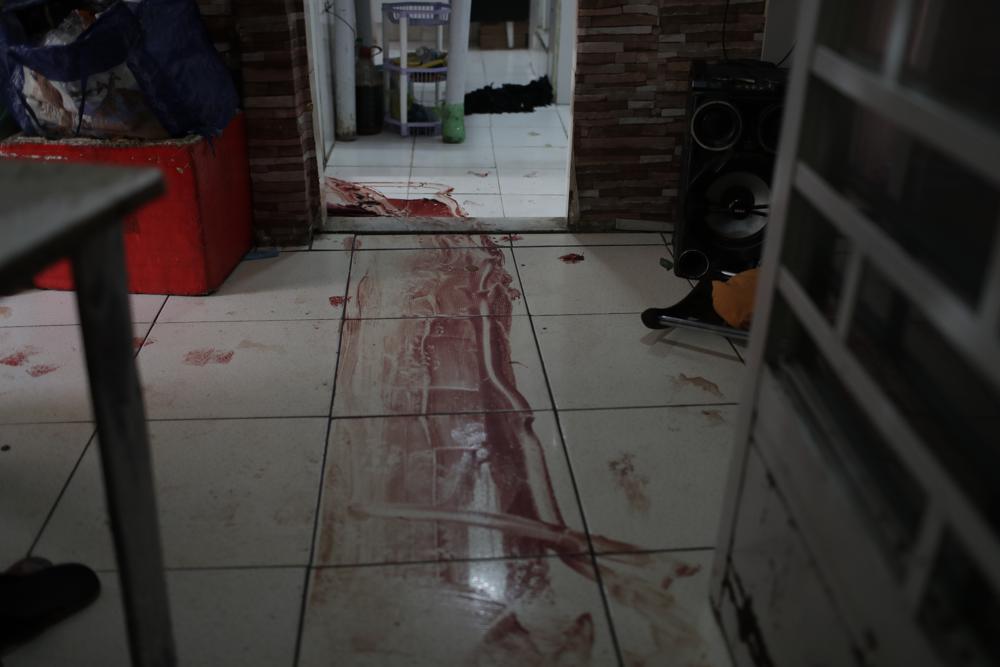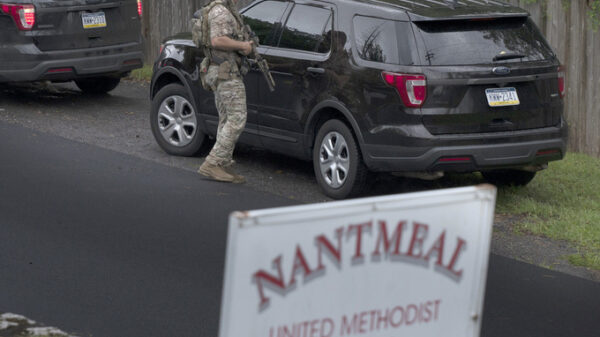Blood covers the floor of a home during a police operation targeting drug traffickers in the Jacarezinho favela of Rio de Janeiro, Brazil, Thursday, May 6, 2021. At least 25 people died including one police officer and 24 suspects, according to the press office of Rio’s civil police. (AP Photo/Silvia Izquierdo)
RIO DE JANEIRO (AP) — A bloody, hourslong gunbattle in a Rio de Janeiro slum echoed into Friday, with authorities saying the police mission killed two dozen criminals while residents and activists claimed human rights abuses.
It was just after sunrise Thursday when dozens of officers from Rio de Janeiro state’s civil police stormed Jacarezinho, a favela in the city’s northern zone. They were targeting drug traffickers from one of Brazil’s most notorious criminal organizations, Comando Vermelho, and the bodies piled up quickly.
When the fighting stopped, there were 25 dead — one police officer and 24 people described by the police as “criminals.”
Rio’s moniker of “Marvelous City” can often seem a cruel irony in the favelas, given their stark poverty, violent crime and subjugation to drug traffickers or militias. But even here, Thursday’s clash was a jarring anomaly that analysts declared one of the city’s deadliest police operations ever.
The bloodshed also laid bare Brazil’s perennial divide over whether, as a common local saying goes, “a good criminal is a dead criminal.” Fervent law-and-order sentiment fueled the successful presidential run in 2018 by Jair Bolsonaro, a former army captain whose home is in Rio. He drew support from much of society with his calls to diminish legal constraints on officers’ use of lethal force against criminals.
The administration of Rio state’s Gov. Cláudio Castro, a Bolsonaro ally, said in an emailed statement that it lamented the deaths, but that the operation was “oriented by long and detailed investigative and intelligence work that took months.”
The raid sought to rout gang recruitment of teenagers, police said in an earlier statement, which also cited Comando Vermelho’s “warlike structure of soldiers equipped with rifles, grenades, bulletproof vests.”
Television images showed a police helicopter flying low over the Jacarezinho favela as men with high-powered rifles hopped from roof to roof to evade officers.
Others didn’t escape.
One resident told The Associated Press that a man barged into her home around 8 a.m. bleeding from a gunshot wound. He hid in her daughter’s room, but police came rushing in right behind him.
She said that she and her family saw officers shoot the unarmed man.
Hours later, his blood was still pooled on her tile floor and soaked into a blanket decorated with hearts.
On Friday, protesters gathered outside police headquarters near Jacarezinho to denounce the violence, holding a banner that read “STOP KILLING US!”

The order came after police fatally shot a 14-year-old in a home where there was no indication of any illegal activity. The teen’s death sparked a Brazilian iteration of Black Lives Matter protests held across the city’s metropolitan area for weeks.
The ruling, which remains in force, caused a decline in police operations throughout the middle of last year, as reflected by a plunge in the number of shootouts reported by Crossfire, a non-governmental group that monitors violence, and in official state data on deaths resulting from police intervention. But both indicators have crept back up to around pre-pandemic levels.
The Candido Mendes University’s Public Safety Observatory said Rio police killed an average of more than five people a day during the first quarter of 2021, the most lethal start of a year since the state government began regularly releasing such data more than two decades ago.
Associated Press writer Mauricio Savarese in Sao Paulo and AP producer Diarlei Rodrigues in Rio de Janeiro contributed to this report.
Copyright 2020 Associated Press. All rights reserved.







































